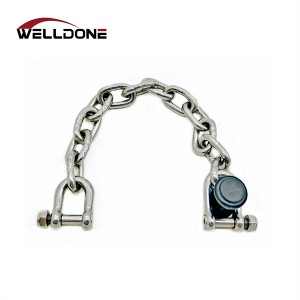Customized Webbing Balance Training line Ninja Slackline
In recent years, slacklining has emerged as a thrilling and unconventional outdoor activity, captivating adventure enthusiasts and thrill-seekers alike. Combining elements of balance, focus, and strength, slacklining has evolved from a niche hobby to a global phenomenon. This article explores the art of slacklining, its origins, the essential equipment, and the physical and mental benefits it offers.
Origins of Slackline:
The roots of slackline can be traced back to the climbing community in the late 1970s. Climbers would string nylon webbing between two anchor points and practice walking across the line to enhance their balance and core strength. What started as a means of honing skills soon transformed into a sport of its own, captivating individuals with its unique challenges and rewards.
Essential Equipment:
- Webbing: The core of slackline is the webbing, a flat and stretchy piece of material that serves as the actual line. This webbing is typically made of polyester, providing the necessary strength and flexibility.
- Anchor Points: Whether it’s trees, rock formations, or specially designed slackline anchors, secure anchor points are crucial for setting up the line. The distance between these points can vary, ranging from a few feet for beginners to substantial distances for experienced slackliners seeking a greater challenge.
- Ratchet buckle: To tension the slackline, ratchet is employed. These mechanisms allow slackliners to adjust the tension of the line according to their skill level and preferences.
- Tree Protection: For those using trees as anchor points, tree protection is essential to prevent damage to the bark. Tree-friendly slings or padding helps minimize the impact on the environment while ensuring the safety of both the trees and the slackliners.
The Slacklining Experience:
1. Beginner’s Zone: Novice slackliners typically start with a low and short line, close to the ground, to build their confidence and familiarize themselves with the art of balancing. As they progress, they can gradually increase the height and length of the line, introducing more challenges to their practice.
2. Tricks and Techniques: Beyond basic walking, slacklining offers a canvas for creativity. Advanced practitioners incorporate spins, jumps, and intricate tricks into their routine. The community continually pushes the boundaries, inventing new moves and techniques that showcase the dynamic and expressive nature of the sport.
Benefits of Slackline:
- Physical Fitness: Slacklining engages various muscle groups, particularly the core, legs, and stabilizing muscles. The constant need for balance and coordination contributes to improved strength, flexibility, and overall physical fitness.
- Mental Focus: Slacklining demands intense concentration and mindfulness. The act of walking or performing tricks on a narrow line requires a calm and focused mind, promoting mental clarity and stress reduction.
- Community and Camaraderie: Slacklining is often a social activity, with communities forming in parks, outdoor spaces, and even online. The shared passion for the sport fosters a sense of camaraderie and support, creating a welcoming environment for beginners and seasoned slackliners alike.
Model Number: Slackline
-
Cautions:
- Check Equipment: Before each use, inspect the slackline, ratchet, and anchor points for any signs of wear or damage.
- Secure Anchors: Make sure the anchor points are secure and will not slip or move during use.
- Clear Area: Choose a clear area free of obstacles or sharp objects which could cause injury if you fall.
Personal Safety:
- Use a Spotter: Having someone to spot you while you’re on the line can provide an extra layer of safety.
- Wear Proper Footwear: Use appropriate footwear to ensure good grip and stability on the line.
- Warm-Up: Perform some light stretching and warm-up exercises before getting on the slackline to reduce the risk of muscle strains.
Technique and Progression:
- Start Low: Beginners should start with the line close to the ground to minimize the risk of falling from greater heights.
- Focus and Balance: Concentrate on maintaining balance and focus on your posture while on the line.
- Learn from Experts: If you’re new to slacklining, seek guidance from experienced individuals or take lessons to understand proper techniques.

















